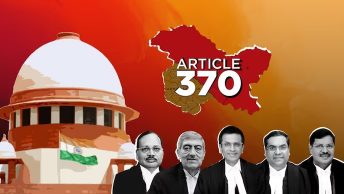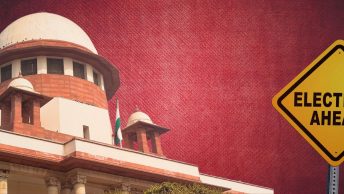In this two-part series, the author analyzes Justice D.Y. Chandrachud’s reasoning while tackling the challenge of Article 17 in the Sabarimala Temple Entry Case [[i]] (“Sabarimala”). Chandrachud J. took a distinct approach by expanding the scope of Article 17 to include the notions of ‘Purity -Pollution’. Part I engages with Chandrachud J.’s interpretation of Article 17 and differentiates his reasoning from the existing jurisprudence on Article 17. This piece aims to look at Chandrachud J.’s take on Article 17 to highlight its expansive nature. Part II critiques an expansive interpretation of Article 17 using the Constituent Assembly Debates. Further, it analyses these debates using Dworkin’s conception of “vague standards” in Constitutional Theory and argues that Chandrachud’s reasoning paved the way for a new form of the ‘non-discrimination’ doctrine, one that lends teeth to the provisions of Article 17 and allows it to attack a wider set of discriminatory practices that find justification in such notions.
- Sabarimala & Article 17 – What, Why, and How?
The Supreme Court through the Sabarimala judgment redefined the contours of Articles 25 & 26, in line with feminist jurisprudential reasoning. However, this judgment was not solely restricted to the clash between individual and religious rights. Chandrachud J., while tackling the challenge of Article 17, took a distinct approach by expanding the scope of Article 17 to include the notions of ‘purity-pollution’.
The petitioners, inter alia, contended that the impugned exclusionary tradition (of restricting the entry of menstruating women from the Sabarimala temple) casts a stigma on menstruating women as it deemed them polluted owing to biological factors. It was argued that such a discriminatory practice should be included within the scope of Article 17 as “the expression ‘in any form’ in Article 17 includes “untouchability” based on social factors and is wide enough to cover menstrual discrimination” [32]. Furthermore, submissions were made by the amicus curiae referencing Section 7(c) of the Civil Rights Act, 1955, which deals with the incitement and encouragement of untouchability in “any form whatsoever,” to argue against a pedantic understanding of “untouchability” and to construe the term in this context of the Act to include exclusion-based notions of purity and pollution.
In support of the aforementioned argument, it was further argued that the constitutional intent of leaving Article 17 ‘open-textured’ was to widen its ambit to include similar practices [70]. In response to these submissions, a restricted reading of Article 17 was put forth, following the understanding that the nature of Article 17 is restricted to only the historical practice of caste-based “untouchability” [247]. It was argued that Article 17, having the word “untouchability” in double quotes, implied a meaning limited to a very specific historical context. Chandrachud J. disagreed with this rationale, whereas Dipak Mishra, Khanwilkar, and Rohinton Fali Nariman, JJ. did not address it, and Indu Malhotra, J. agreed with this proposition. Therefore, there is currently no clear ratio regarding the scope of interpretation of “untouchability” as mentioned in Article 17.
- Chandrachud J.’s Reading of Article 17: Breaking the Trend
The courts have interpreted Article 17 in a way that has been limited to only its historical context i.e., caste-based discrimination practised in India. Notably, in Devarajiah, the Karnataka High Court limited the scope of “untouchability” to the historical context of the practice, which was later affirmed by the Supreme Court in Appa Balu Ingale. It confined the scope of “untouchability” to the historical discrimination faced by Dalits under the caste system [11-17]. K. Ramaswamy, J. gave the rationale for this by concluding “untouchability” to be the “basic and unique feature, inseparably linked up with the caste system” [para 18].
In Sabarimala, Chandrachud, J. deviates from this approach by going into the very logic of the caste system. He acknowledges the ‘undefined’ nature of “untouchability” under Article 17 and concludes such to be a deliberate aberration [249]. To support his idea, he references the Constituent Assembly proceedings during which, questions relating to the scope of Article 17 had indeed come up.
Chandrachud, J. goes a step further in interpreting Article 17, and acknowledges the logic of ‘purity-pollution’ to “constitute the core of caste” [253]. He then, with this observation, opts to inquire into the principle that Article 17 embodies. He understands Article 17 to be embodying the principle of prohibiting the logic of ‘purity-pollution,’ the consequences of which have been the practice of caste-based “untouchability”.
He understands the logic of purity-pollution to manifest in context-specific forms that transcend just caste, i.e., society, regarding women, etc [258]. He culls out this logic, existing as a separate phenomenon, behind the practice of “untouchability”, at its core. He considers Article 17 to be attacking this essence of the caste systemand not only its manifestation in the caste system [253], because such logic may manifest in a kind of “untouchability” that the Constitutionseeks to prohibit by mentioning the words “in any form” in Article 17.
Simply put, the logic of Purity-Pollution is the genus and one of its species is the caste system. Article 17 targets the genus, which, as per the reasoning of Chandrachud J., allows for the presence of different kind(s) of “untouchability.” The principle is that all practices of the caste system are bound to follow this logic, but not the other way around; since Article 17 targets this logic, the scope of Article 17 goes beyond just the caste-based practice of “untouchability”.
[[i]] Sabarimala MANU/SC/1094/2018.
Archit Sinha is a 2nd-year student at the National School of India University, Bangalore (B.A. LL.B).
This article has been co-edited and coordinated by Sukrut Khandekar, Anushree Verma & Suhani Paruvelly from our student editorial team. ]
Image Credit: Hanna Barczyk. You can find their illustrations here.







woqpwv